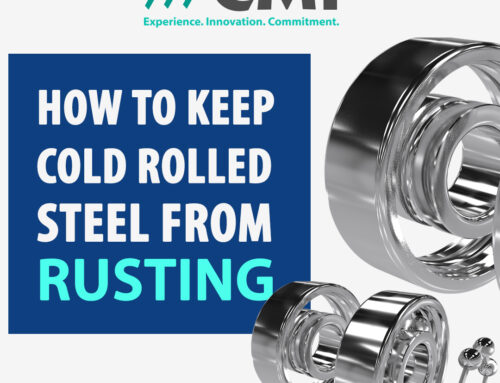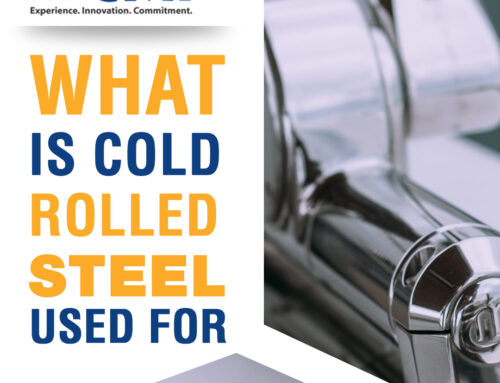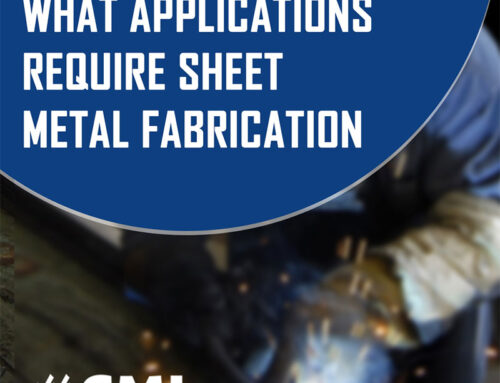Sheet Metal Fabrication Service
When finding suitable materials for your next sheet metal fabrication project, you need to keep some things in mind. Custom sheet fabrication is one service that can meet the needs of those looking for a custom design. However, you need to find a material that will hold up under pressure, the temperatures to which it will be exposed, and other factors. You first need to sit down and determine the uses for your particular application, and then what would be expected of that product will come to life. Sure, it is easy to fabricate something but will that fabrication hold up under load? As a sheet metal fabricator, we have seen countless times when the manufacturer could have saved some money if they had done more upfront research and design.
Determining Your Material Selection
You can choose to use many different materials in your sheet metal fabrication. However, the most common are steel and aluminum. This is because these two materials allow the fabricators to melt, punch, bend, mold, heat, and cool the materials to get the desired profile they are looking for. When different things are done to these materials, they will exhibit different properties. While these are two of the most popular materials, we also offer others such as:
- Lead
- Copper
- Brass
- Aluminum
- Galvanized Steel
- Stainless Steel
- Steel
- Composites.
Aluminum is often used when the part will need to be erosion-resistant yet lightweight. The extrusion tooling is usually very affordable for aluminum as well. This material is good for lengthy parts as it works well in the extrusion process. The process starts with aluminum billets being fed through dies during the molding process. These dies will create the desired shape during a continuous process. If you are looking for more cost reduction, you could look at steel for the same process.
Steel is less costly per pound and is a very common material used for metal parts. While it isn’t naturally corrosion-resistant, it can be coated to have resistance. It is usually stronger than aluminum and more durable. It, too, can be molded through roll forming. Roll forming consists of a series of rollers that will form the material to the desired shape. It can be combined with tapping or punching and cutting and forming operations that can be done in line of production.
Other ways to fabricate sheet metal are with stamping or press braking. However, this isn’t a viable solution for complex geometric shapes.
Selecting Materials for Your Next Sheet Metal Fabrication Project
It is very important to look at ways to reduce costs by cutting weight during manufacturing. That’s why you must team up with a knowledgeable sheet metal fabricator that can go that extra mile to ensure things are adequately engineered. When you are looking at your next sheet metal project, be sure you keep these things in mind.
Geometry
A broad range of materials and processes can create various geometry. Even with advanced equipment and knowledge, you will need to ask yourself what geometric shapes are required to achieve your goals. These questions should include:
- When I have a specific profile in mind, what processes and materials will allow me to make that shape easily?
- What type of shapes are we looking at? Complex linear shapes or simple bends?
End-Use
You will want to consider the product’s end-use and what you can do to improve the product’s overall lifespan while in the field. Other questions are:
- What materials are best for the long-term use of this product?
- What type of environmental exposure will this part be exposed to?
- In what conditions will the end part be?
- What other parts will this part have to connect to for operation?
Production Run Length
It would help if you looked at this project long-term. This means that there might be more upfront costs to get started but what is the overall return? Many sheet fabrication projects are very long-term, and getting set up might seem like a cash flow crunch, but to do it right. Take into consideration the best way that makes sense in the long run. More questions to think about are:
- Is tooling cost amortization an option to assist with cash flow?
- What are the expected EAUs (estimated annual units) or runs for this product?
Length of the Part Prior to Assembly
Take into account the length that you will need the product. While roll forming is very affordable and easy, it does have its limits. The limit is 53″. If your product is longer than 53″, then other processes should be considered.
Roll Forming Design Considerations
There are many fabrication processes, but roll forming is the most popular for sheet metal fabrication. Roll forming is used as it is easy to process and removes some of the challenges presented in other metal processing types. This creates design opportunities for:
- Redesigned aluminum extrusions
- Long Parts
- Parts with complex geometry
- Product requiring edge conditioning
Edge Conditioning
When you create parts where the edges matter, you will need to find a process that can take care of burrs or make the edges rounded with ease. This can be done with roll forming right in line with production, not adding any additional costs. While most stampers don’t offer edge conditioning, you can often have a service center help you. However, this will be an additional cost to consider.
Wide Range of Geometry of Design
If a part has too many bends, it cannot be stamped. One big reason people choose roll forming over stamping is the geometry of the final part. Roll forming can work with complex shapes to give the desired look.
Metal Part Length
This rolling process allows sheet metal fabricators to produce large production volumes easily. The length of the sheet is only limited to that 53″, as mentioned before. Various tools and dies can be used to easily create different-looking parts while production continues without issues.
If you are looking for sheet metal production or metal fabrication services and don’t know where to start, what materials to use or what process would be best, ask. We are simply a phone call away and have been working with sheet metal for many years and are happy to assist.









You must be logged in to post a comment.